…and there’s more development around McCormick Place! Read on… Curbed Chicago reported on the recent votes by the Chicago Plan Commission approving the Lucas Museum of Narrative Art, held October 16. There are two points of controversy: the actual design (likened to Jabba the Hutt) and the actual parkland, which is as hallowed as New York’s […]
Viewing: Blog Posts Tagged with: museums, Most Recent at Top [Help]
Results 1 - 25 of 69
Blog: PW -The Beat (Login to Add to MyJacketFlap)
JacketFlap tags: Chicago, museums, hotels, Walt Kelly, comic art, C2E2, McCormick Place, Top News, Lucas Museum of Narrative Art, Add a tag
Blog: Design of the Picture Book (Login to Add to MyJacketFlap)
JacketFlap tags: art, color, space, filmmaking, composition, museums, line, shape, MoMA, Frank Viva, Add a tag
by Frank Viva (MoMA Publications, 2015)
So this is a super cool book. It’s part MoMA history, part this funky young visionary’s story. Look at her camera perched by her side! Her confident gaze directly into the reader’s eye! A nearly animated cover where the bittiest blocks of color almost blink!
One of the things that I always look for in books for kids are stories that honor their realness. Their hopes and dreams and fears and feelings that sometimes grownups have forgotten all about. Charlotte always carries that slim smile, even when the nun tells her none of that. I’d imagine this isn’t the only place she’s heard that she might be a bit unusual.
That’s because Charlotte prefers black and white to color, and when kids have a preference, it’s usually a pretty strong one. Kids don’t generally go around only sort of caring about something.
And here’s a beautiful example of that. Charlotte’s safe world is black and white, a stark contrast to that of her parents. To the left of the gutter, a home, and to the right, something unfamiliar and loud.
But her parents know this and they understand.
On Friday nights they take her to see black and white movies. And Charlotte is happy.
And on Sundays, they go to the Museum of Modern Art. And Charlotte is happy.
That’s where Charlotte meets Scarlett, an aficionado of black and white too, and how it clears away the clutter. And that’s where Charlotte’s smile returns.
Here’s a kid, wholly in love with something that might seem unconventional. But she has parents who get it, a trip to an art museum that seals it, and a cat who is always willing to play a part.
So that’s what Charlotte does: makes a film in black and white. Scarlet calls it dazzling and genius, but the colorful people?
Only that was their reaction at the beginning, before Young Charlotte, Filmmaker had finished telling her story.
Be sure to check out Young Frank, Architect as well. These two are a perfect pair.
PS: Over on Instagram, a bunch of us teamed up to share one book on a particular theme each month. This was Michelle‘s brilliant idea, and we’d love it if you followed along. Check out #littlelitbookseries! Janssen of Everyday Reading shared another favorite Frank Viva book as part of that series, which is the same one that I wrote about once upon a time for Design Mom!
And thanks to Frank Viva for the images in this post!
Add a CommentBlog: Elizabeth Varadan's Fourth Wish (Login to Add to MyJacketFlap)
JacketFlap tags: museums, Portugal, Cathedrals and churches, folklorico dance, historical homes and gardens, Add a tag
 |
| The main entrance of Se Cathedral |
 |
Braga is a city of churches, given its long history as the the religious capital of Portugal. But you see the interweaving of Roman and Baroque in many of the churches, and also many of the mansions and museums. One example is the old Archbishop's Palace, where the Jardim de Santa Barbara (Santa Barbara Garden) is nestled in a back square of the former palace.
 |
| You can see how the word "Palace" applies here. |
 |
| Add caption |
 |
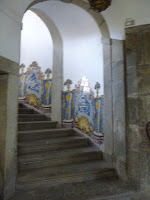 |

 |
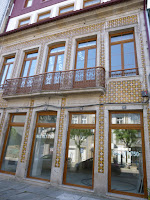 |
 |
 |
Back to the churches: You could call Braga a city of churches. As the religious capital of Portugal, there are over thirty-to-thirty-five churches, in addition to the Sé Cathedral, and all quite distinctive. There is Igreja dos Congregados on the one side of Avenida Central bordering Praça República (Republican Square (two views below).
 |
| Seen from the Arcada, which fronts one end of Republican Square. |
 |
| Seen from across the triangular park that starts at the Arcade and ends in Largo Senhora Branca. |
 |
 |
There were other churches of note: Bon Jesus, four miles out of town, up in the hills, which we did see last fall while attending a photography exhibit. (Our pictures were mainly of the exhibit, but here is a plaque on one wall.) A small, baroque church on a street behind the Arcade, Igreja da Terceira Ordem Regular de São Francisco (Church of the Third Regular Order of Saint Francis). And inside the arcade is a small church, Igreja Paroquial de Nossa Senhora da Lapa (Our Lady of Lapa).
 |
 |
| If you look closely, you'll see more beautiful Azulejos. |
Then there were the museums. I'll concentrate on two that captured our attention. On our first trip, we went to the Museu da Imagem - The Image Museum, that specializes in photography exhibits. I had read of this museum in a travel article posted in the Huffington Post and was particularly interested, because my husband does black-and-white photography. Online, we made friends with the director, Rui Prata, and when we visited, we got acquainted with him and this beautiful museum. It's partly housed in an old tower of the original castle and an adjoining building that looks out on the street. Inside are current exhibits and historical photographs of Braga, and Rui Prata was generous with his time, telling us much about the history of Braga. He himself is a photographer, a curator of exhibits, and has recently retired from director of the museum to move to Finland from where he still curates exhibits all over Europe.
 |
| Museum entrance - the red building. |
 |
| Street view from inside the door. |
 |
| My husband debating what to look at first. You can see the complexity of the layout. |
 |
| Just one of the sections of photos. |
 |
| This particular exhibit was about the 1974 Carnation Revolution |
 |
| Later Rui treated us to dinner and introduced us to some fine Portuguese wines. |
We'd often heard about the Museu dos Biscainhos, a historical mansion, originally built in the early 17th century by a noble family. Inside its many rooms are collections of 17th and 18th century European and Asian furniture, ceramics, porcelain, glass, paintings, etc. The baroque palace or manor had its own chapel, servant quarters, carriage house. But it was the 18th century baroque garden with statues, fountains, pathways between hedges and flower beds, and trees that blew me away, and I focus my pictures on its beauty. 9One tree is a giant tulip poplar, sent from Virginia to the nobleman's family 2 centuries ago.)
 |
 |
 |
 |
A 200-year-old tulip poplar and me.
Did I mention it was huge?
Moments like this give you a sense of your size in the scheme of things.
Last, but not lease, I'd like to mention our good fortune to meet Inȇs Barbosa on our first and subsequent visits. Inȇs is getting her Masters at University of Minho and was interning at the hotel where we stay (Hotel Senhora a Branca) until just recently, when she went to work for Lufthansa in Porto. She patiently answered innumerable questions about Braga, about Portugal, about Fado, etc. On our last visit she told us about some of the Folklorico groups in Braga. The group she belongs to were to perform in Santiago de Compostela, Galicia, the day after we left Braga.
 |
| In Folklorico costume. |
How about you? Do you belong to a heritage or historical interest group of some kind? Do you love historical buildings and gardens?
Blog: smartpoodlepublishing.com (Login to Add to MyJacketFlap)
JacketFlap tags: Appearances, Museums, The Travel Adventures of Lilly P Badilly, Debbie Glade, Miami Children's Museum, Add a tag
I was invited to share The Travel Adventures of Lilly P. Badilly with visitors at the wonderful Miami Children’s Museum on Saturday May 9 in celebration of Children’s Book Week.
Miami Children’s Museum is located on Watson Island along the MacArthur Causeway, overlooking the port and downtown Miami. It’s one of the country’s largest children’s museums and includes 14 galleries, a wide variety of impressive educational outreach programs, an auditorium, a pre-school and a charter school. You can even have an awesome birthday party here. The building is so uniquely beautiful; check it out . . .
Parents and their kids stopped by to see what Lilly Badilly was all about. We had a great time dancing and learning about the animals of the rain forest. Children are never too young to love maps! Each child at the presentation received a free copy of the book, courtesy of the museum. Everyone is so nice and accommodating here, and I’d love to come back for another visit.
I want to thank Ashley Harrison, Public Programs Manager for inviting me to Miami Children’s Museu and Laura for helping me bring in all my props, setting up and taking photos.
If you’re in Miami and have children, you’ve got to visit Miami Children’s Museum:
980 MacArthur Causeway, Miami, FL 33132
305 -373 -5437
Blog: Galley Cat (Mediabistro) (Login to Add to MyJacketFlap)
JacketFlap tags: Dr. Seuss, museums, Theodor Seuss Geisel, Authors, Add a tag
 The directors behind the Springfield Museums intend to launch a new cultural institution in honor of Theodor Seuss Geisel. An opening date for the permanent exhibition (first floor) of the “The Amazing World of Dr. Seuss Museum” has been set for June 2016.
The directors behind the Springfield Museums intend to launch a new cultural institution in honor of Theodor Seuss Geisel. An opening date for the permanent exhibition (first floor) of the “The Amazing World of Dr. Seuss Museum” has been set for June 2016.
According to the announcement, a permanent exhibit on the first floor will consist of three sections: Mulberry Street, Dr. Seuss’s Neighborhood, and Readingville. Visitors will encounter “a series of environments that replicate scenes from Dr. Seuss’s imagination and encounter life-sized three-dimensional characters and places from the books.”
The second floor area will showcase “a re-creation of Ted Geisel’s studio, an exhibition about the making of the Dr. Seuss National Memorial Sculpture Garden and other related displays.” It will not be made available to the public until 2017. (via TheArtery)
Add a CommentBlog: What's New (Login to Add to MyJacketFlap)
JacketFlap tags: children's literature, museums, Ancient Egypt, mummies, Add a tag
It turns out that you are never too old to have a birthday--as in a 3,000-year-old birthday!!!
That's right. A mummy at the St. Louis Museum of Art will celebrate his birthday next month. His name is Amen-Nestawy-Nakt, and he lived in 900 B.C. He was a priest at the Temple of Karnak and must have done a good job to merit such a fancy mummy case.
Perhaps you'd like to celebrate mummies too. A great way to do it would be to explore a few books on the topic. There are a great many good ones out there at your school or public library or your local bookstore.
Here are a few I found:
SECRETS OF THE MUMMIES by Harriet Griffey
This is a Level 4 reader that presents mummies from around the world.
CREEPY EGYPTIAN MUMMIES YOU WOULDN'T WANT TO MEET by David Stewart
Ten of the creepiest mummies and information on how the whole mummification process works.
MUMMIES IN THE MORNING by Mary Pope Osborne
Another Magic Treehouse Mystery--this one finds Jack and Annie in Ancient Egypt encountering lots of adventures.
MUMMIES IN THE LIBRARY by John Perritano
Who knew mummies and math go together? Well, it seems very beneficial to know division in order to embalm a mummy. Find out how it all works with this math challenge story from iMath Readers.
Hope you find someMUMMY special to hang out with!
Happy reading :)
Blog: Liz Carmichael's Portal (Login to Add to MyJacketFlap)
JacketFlap tags: Community, art, science, natural history, museums, WordPress.com, Add a tag
With International Museum Day approaching on May 18, let's browse the blogs of some museums on WordPress.com -- from premier art institutions to science and natural history organizations.![]()
Blog: Sylvan Dell Publishing's Blog (Login to Add to MyJacketFlap)
JacketFlap tags: museums, Sylvan Dell, Special Days, Sylvan Dell Posts, meet the planets, moon day, solar system forecast, space shuttle endeavour, books, science, space, Add a tag
In July of 1969, human history changed forever when astronauts Neil Armstrong and Buzz Aldrin walked on the moon’s surface. In honor of the upcoming anniversary of the moon landing, we’ve compiled a list of space-related museum exhibits. From space shuttles to simulated treks across Mars, these exhibits all immerse visitors in the story of the space race and educate them about what’s beyond this world.
Space Shuttle Enterprise
Located in New York City, the Intrepid Sea, Air and Space Museum’s newest exhibit, which just opened on July 10, is the Space Shuttle Pavilion which now holds the Enterprise. The Enterprise was NASA’s original orbiter. It conducted tests within Earth’s atmosphere in the late 1970’s and was crucial in the success of America’s shuttle program. NASA retired the shuttle in 1985, and the Enterprise is now being showcased on the Intrepid in Manhattan. Visitors are greeted with 35-year-old audio recordings of astronauts exchanging radio calls with flight controllers. The exhibit includes stories about the orbiters and the people involved with them, the early designs of the shuttles, technological innovations, and much more.
Destination Station
At the Pacific Science Center in Seattle, WA, visitors can immerse themselves in the story of the International Space Station. From the international cooperation that makes the constant scientific research at the station possible, to the audio and visual technology that connects visitors to space, this exhibit will enthrall anyone who has ever wanted to go to space. The exhibit is open until Sept. 2.
Space
For those of you in the Columbus, OH area, the COSI has a fantastic exhibit all about outer space. Visitors can explore the surface of Mars, ride in a space capsule, compare the effects of gravity from planet to planet, and watch live NASA TV. This exhibit gives visitors all kinds of information on rocket technology, the attempt to find life in the universe, and more.
Space Shuttle Endeavour
At the California Science Center in Los Angeles, CA, visitors can hear the space shuttle Endeavour’s story before actually viewing the Endeavour itself at the Samuel Oschin Pavilion. Endeavour: The California Story tells the story of how the Endeavour and other shuttles were produced in California and showcases the artifacts that helped make them functional. Then at the Samuel Oschin Pavilion, visitors will get up close and personal to the shuttle and learn about its missions and the people involved with them. Entrance requires a separate ticket with a $2 service fee, and the museum strongly suggests purchasing that ticket in advance.
The Air and Space Museum
The Air and Space Museum in Washington, D.C. is dedicated to flight both within and beyond the earth’s atmosphere and is a treat for anyone who is passionate about air and space. Exhibits include everything from the Mercury Capsule 15B, Freedom 7 II, to the Manned Maneuvering Unit, to the space shuttle Discovery and much more. Anyone in the D.C. area who likes flight cannot miss this museum.
If you are not near one of these museums celebrate with us and read Meet the Planets or Solar System Forecast!
Blog: Sylvan Dell Publishing's Blog (Login to Add to MyJacketFlap)
JacketFlap tags: science, rain, museums, summer activities, glaciers, Sylvan Dell Posts, robot building, Add a tag
It may be summer, but learning doesn’t have to go on hiatus. There are all sorts of fun and educational opportunities for kids on vacation or even in their own hometowns. Here is a list of museum exhibits, most of them only temporary, that could grab your child’s attention and teach them more about the world.
Melting Glaciers
It seems like everywhere these days we’re hearing about melting ice caps and global warming. A new exhibition at the Museum of Modern Art in New York aims to teach  visitors about climate change by showing physical melting glaciers. The glacier chunks have been frozen for about 800 years and broke off from an actively melting glacier in Europe. This exhibit will be open at MoMA PS1 in Queens until Sept. 2.
visitors about climate change by showing physical melting glaciers. The glacier chunks have been frozen for about 800 years and broke off from an actively melting glacier in Europe. This exhibit will be open at MoMA PS1 in Queens until Sept. 2.
Build Your Own ‘Bot
Have you ever watched R2D2 roll around and beep in the Star Wars movies and wished you could build your own droid? The Tech Museum of Innovation in San Jose, CA has a new exhibit in which kids can create their very own robot. Visitors design, build, and program original robots using the technologies at the exhibit.
CSI
America is hooked on cop shows, and at some point, every kid has wanted to be a cop or detective. Now you can at Fort Worth Museum of Science and History in Texas. Their new exhibit CSI: The Experience allows visitors to solve crimes just like the characters on CSI, doing everything from collecting evidence to conducting autopsies. The exhibit is open through Sept. 2.
What About Whales?
The Children’s Museum and Theatre of Maine in Portland has an entire exhibit dedicated to a sea creature that will capture the hearts of any child who visits. What About Whales? is an interactive exhibit which educates children about whales by letting them climb in and out of an inflatable life-size humpback whale. Other activities include a whale-watching boat, a Feed a Whale ballgame, and much more.
Treasure Hunting
The Discovery Center Museum in Rockford, IL has an exhibit for any kid who has ever wanted to hunt for treasure, whether as a pirate from the 1600s or a modern-day treasure hunter. The Treasure! exhibit allows visitors to try treasure hunting tools, view artifacts from treasure sites, and learn about the history of and people involved in treasure hunting.
Rain Room
 For those of you in the New York area, be sure to check out the Museum of Modern Art’s “Rain Room.” Located in the lot directly adjacent to MoMA, the Rain Room uses digital technology to make it rain except wherever it detects human presence. Visitors can stand in one spot and remain dry while they watch the rain fall all around them. The Rain Room is on exhibit until Jul. 28.
For those of you in the New York area, be sure to check out the Museum of Modern Art’s “Rain Room.” Located in the lot directly adjacent to MoMA, the Rain Room uses digital technology to make it rain except wherever it detects human presence. Visitors can stand in one spot and remain dry while they watch the rain fall all around them. The Rain Room is on exhibit until Jul. 28.
Whether you check out these exhibits or a museum closer to home there is so much to be explored!
Blog: Shelf-employed (Login to Add to MyJacketFlap)
JacketFlap tags: nonfiction, art, Non-Fiction Monday, picture books for older readers, museums, Add a tag
Goldin, David. 2012. Meet Me at the Art Museum: A Whimsical Look Behind the Scenes. New York: Abrams.
With a mixture of humor, photography, collage, cut paper, virtual realia, and some expressive and artfully-place eyeballs, David Goldin has created a book that takes children on a comprehensive and behind-the-scenes tour of an art museum.
Employing the friendly docent's helper, Daisy, and the unceremoniously discarded Stub, Goldin guides the reader from the practical,
"Now is a good time for a break," said Daisy. "This is a cafe, where you can sit and rest your feet. ... You need to get your energy back, because there's another whole floor of treasures. You don't want to miss a single one!"
to the protective,
"Other high-tech equipment is also used to keep precious objects safe," said Daisy. "It's the conservator's job to make sure the air is not too humid, not too dry. "They control the temperature. Not too hot, not too cold. They control the lights, too. You can't have it too dark or too bright. Everything has to be just right. The conservator also fixes damaged objects in the museum's workshop."
to the awe-inspiring,
Stub discovered ... ancient writing sculptures of wood, bronze, and stone mobiles paintings costumes. It was thrilling! One day I'm gonna live in a museum, thought Stub.The adorable Stub and Daisy provide the fun; and a surprise ending offers Stub the chance to live out his dream.
Back matter includes "Who's Who at the Museum" (archivist, conservator, curator, etc.), "What's What at the Museum" (exhibition, gallery, etc.), and "Art Titles" (a list of pieces depicted in the book).
The punctuation is a bit peculiar, with several instances of unclosed parentheses, but no matter, it's a book of art, not grammar.
If I were escorting a child or class to a museum, this book would be on my "must share" list. Well worth the price of admission!
Today's Nonfiction Monday roundup is hosted by its organizer, Anastasia Suen, at her Booktalking blog.
Blog: Silver Apples of the Moon (Login to Add to MyJacketFlap)
JacketFlap tags: vacation, dinosaurs, museums, Add a tag
Add a Comment
Blog: Silver Apples of the Moon (Login to Add to MyJacketFlap)
JacketFlap tags: Springville Art Museum, vacation, museums, Add a tag
Blog: Silver Apples of the Moon (Login to Add to MyJacketFlap)
JacketFlap tags: museums, BYU MOA, vacation, Add a tag
Add a Comment
Blog: Read Alert (Login to Add to MyJacketFlap)
JacketFlap tags: Book List, art, galleries, museums, Add a tag
Esteemed YA writer and dress-upperer extraordinaire Leanne Hall recently asked:
And we’re so glad she did!
If you’re looking for a road-trip book list, check out our previous post here.
If you’re after museums and galleries, read on:
 A Pocketful of Eyes by Lili Wilkinson
A Pocketful of Eyes by Lili Wilkinson
Beatrice May Ross signed on for a summer job at the Museum of Natural History. Then her supervisor turns up dead in the Red Rotunda, his pocket full of glass eyes. Taxidermist turns detective in this museum-based crime-fiction.
I may be stretching the definition a little, but if you’re after an arty YA book, you really can’t go past Graffiti Moon. Lucy is an artist who works with glass. She’s trying to meet the mysterious graffiti artist known as Shadow. There are many beautiful descriptions of Lucy’s and Shadow’s respective artworks, as well as many references to well known artists and their works, from Picasso to Bill Henson. You can view a great online gallery of the art featured in the book over here.
 Notes from the Teenage Underground by Simmone Howell
Notes from the Teenage Underground by Simmone Howell
Three best friends, Gem, Lo, and Mira, undertake themed summer projects together. The “underground” summer starts when a school visit to the National Gallery of Victoria inspires Gem to make an underground film.
Same Difference by Siobhan Vivian
Emily attends a summer art program in Philadelphia – world’s apart from her old suburban existence, just like she wants. As well as following Emily’s growth as an artist (and an individual), there’s also a class trip to a museum.
(Not yet published in Australia.)
0 Comments on Book List: Galleries and Museums as of 1/1/1900
Blog: Schiel & Denver Book Publishers Blog (Login to Add to MyJacketFlap)
JacketFlap tags: Authors, Mark Twain, Laura Ingalls Wilder, John Updike, museums, Ernest Hemingway, Add a tag
 The John Updike Society has finalized a contract to purchase John Updike‘s home for $200,000.
The John Updike Society has finalized a contract to purchase John Updike‘s home for $200,000.
Located in the Pennsylvania town of Shillington, Updike lived in the home for thirteen years as a child. John Updike Society president James Plath announced that the organization plans to make the house a historic site and convert it into an operational museum.
Here’s more from Reading Eagle: “Out of respect for the residential neighborhood, Plath said, he expects the historic site to be open only by appointment and not list regular hours. Plath said he has researched the operations of similar historic sites that were once authors’ homes, including the Carson McCullers Center for Writers and Musicians in Columbus, Ga., and the Scott and Zelda Fitzgerald Museum in Montgomery, Ala.”
New Career Opportunities Daily: The best jobs in media.
Add a CommentBlog: Schiel & Denver Book Publishers Blog (Login to Add to MyJacketFlap)
JacketFlap tags: Authors, Mark Twain, Laura Ingalls Wilder, John Updike, museums, Ernest Hemingway, Add a tag
 The John Updike Society has finalized a contract to purchase John Updike‘s home for $200,000.
The John Updike Society has finalized a contract to purchase John Updike‘s home for $200,000.
Located in the Pennsylvania town of Shillington, Updike lived in the home for thirteen years as a child. John Updike Society president James Plath announced that the organization plans to make the house a historic site and convert it into an operational museum.
Here’s more from Reading Eagle: “Out of respect for the residential neighborhood, Plath said, he expects the historic site to be open only by appointment and not list regular hours. Plath said he has researched the operations of similar historic sites that were once authors’ homes, including the Carson McCullers Center for Writers and Musicians in Columbus, Ga., and the Scott and Zelda Fitzgerald Museum in Montgomery, Ala.”
New Career Opportunities Daily: The best jobs in media.
Add a CommentBlog: GregLSBlog (Login to Add to MyJacketFlap)
JacketFlap tags: Chicago, dinosaurs, museums, paleontology, natural history museums, Add a tag
In honor of NCTE/ALAN being in Chicago this year, I thought I'd toss in a post about Chicago dinosaurs. :-). If you have the time, check out the Field Museum: Tyrannosaurus rex (background) with (unidentified) Homo sapiens.
Tyrannosaurus rex (background) with (unidentified) Homo sapiens.
The Field Museum of Natural History (Chicago): My hometown museum, still one of the best in the world. The Field Museum is part of a lakefront museum campus that includes the Shedd Aquarium and Oceanarium and the Adler Planetarium. Just up Lake Shore Drive is the Lincoln Park Zoo, and a short drive south is the Museum of Science and Industry.
The Field is home to Sue, one of the largest, most complete Tyrannosaurus rex skeletons ever found, as well as a Daspletosaurus and a host of other, less carnivorous dinosaurs (like Parasaurolophus and Diplodocus).
Sue is prominently placed in the Stanley Field Hall (the main hall), with the elephant diorama and the big totem poles. On the balcony above the skeleton is the actual skull (the real one being too big to mount) and a mural depicting what Sue would've looked like in real life.
 |
| Sue close-up |
| Triceratops and T.rex face off |
0 Comments on Chicago Dinosaurs: Field Museum of Natural History as of 1/1/1900
Blog: GregLSBlog (Login to Add to MyJacketFlap)
JacketFlap tags: dinosaurs, museums, paleontology, natural history museums, Add a tag
I've mentioned before that one of the fun things about writing CHRONAL ENGINE is that it provides an excellent excuse to visit natural history museums and other places where paleo-stuff abounds.
 |
| T.rex ("Sue") and H.sapiens (unidentified) |
 |
| Exhibit in progress. Photo courtesy Carnegie Museum of Natural History |
 |
| Paluxysaurus. Photo courtesy Fort Worth Museum of Science & History |
Blog: Shelf-employed (Login to Add to MyJacketFlap) JacketFlap tags: graphic novel, book review, historical fiction, J, museums, deafness, Advance Reader Copy, Add a tag
 Selznick, Brian. 2011. Wonderstruck. New York: Scholastic. Selznick, Brian. 2011. Wonderstruck. New York: Scholastic.During the course of reading Wonderstruck, I misplaced the book. When I asked my family if anyone had seen it, my daughter answered, "Which book? The one with two different covers?" I hadn't thought of it that way, but yes, the book with two different covers. *minor spoiler alert* (though I'm not giving any more away than Brian Selznick does in his Wonderstruck video - see below) Wonderstruck's cover is a preview of its contents - two stories, two eras, two modes of storytelling. One would think that after his ground-breaking, Caldecott Winner, The Invention of Hugo Cabret, Brian Selznick could not have any more surprises up his sleeve, but in Wonderstruck, he again inspires us with this singular story of two mysterious and wonder-filled journeys. Ben's story begins in Gunflint Lake, Minnesota, in June, 1977; Rose's, in Hoboken, New Jersey, 1927. Though 50 years divide their stories, the children embark on parallel journeys fraught with uncertainty and risk, and guided by purpose - a need to know. Ben's story is told in third person prose, while Rose's is told in Selznick's incredibly detailed, unmistakable pencil drawings. The two stories are woven together, sometimes almost touching, other times gathering distance until at last, in a single drawing, with a simple turn of the page, Selznick seamlessly binds the two stories together, where they stay, until Wonderstruck's conclusion. It is clear that Selznick's fascination with silent film and early cinema did not end with Hugo Cabret. Silent film is featured in Wonderstruck, not in the same capacity as in Hugo, but rather as a vehicle for introducing deaf culture. It is museums, not film or mechanics, that take center stage in Wonderstruck. Both Rose and Ben are seeking something, and both find themselves, a half century apart, at the same location, the American Museum of Natural History, where they are fascinated by museum dioramas and early museum collections, or "cabinets of wonder." Readers will be fascinated as well, by Wonderstruck's story, artwork, and the offered glimpse into another time and another culture.
|










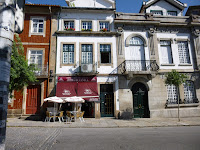


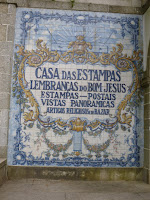







































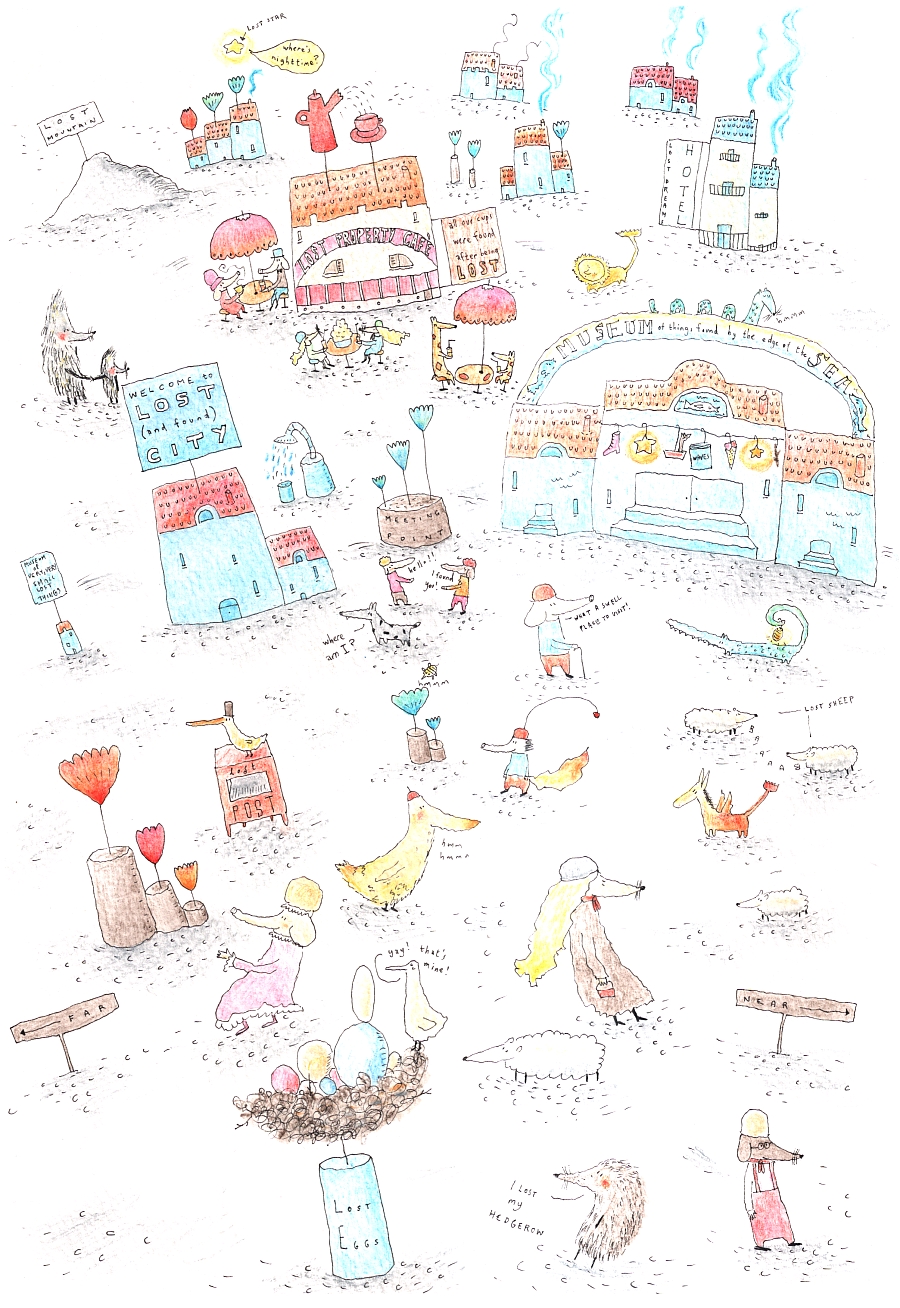
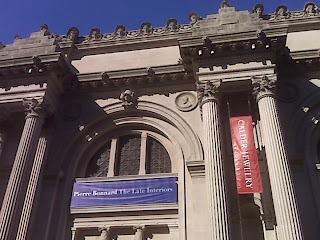
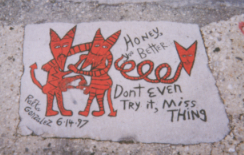
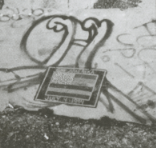








Love the idea, hate the placement. Hey, there’s a million places other than the peoples parkland to put Luca’s museum. The stipulation is that he wants waterfront land for it. So why not tear up that ugly eyesore of the McCormick Place east, and put it there? Not like they use this old beast for much anyway.
Well, some have suggested tearing down the Lakeside Center of McCormick, but then, you run into the same regulation regarding the lakefront. McCormick, the side east of Lakeshore Drive, is grandfathered in.
http://www.chicagoarchitecturalclub.org/Competition-2011-Burnham-Prize
If you can’t place it on top of a parking lot…
(yes, Friends of the Parks is fighting to protect a parking lot, in the future hope that it will be converted to parkland…which ain’t gonna happen unless you move that parking elsewhere),
…you can’t place it on top of a convention hall.
Myself, I think it’s a good fit, especially with the other museums nearby.
Also, there will be a bridge to Northerly Island.
But that SOM wetlands idea is pretty cool as well.
Lakeside is used.
It has the Arie Crown Theater, which seats 4,429. http://www.ariecrown.com/
C2E2 used it during their first show.
Hall D has lots of natural light, there’s access to the shoreline if you need to escape, and the building offers a wrap-around patio which can be used for outdoor displays.
Of the upcoming calendar, there are:
2/5 events in November
1/4 in December
0/2 in January
1/6 in February
2/5 in March (including one event at the same time as C2E2)